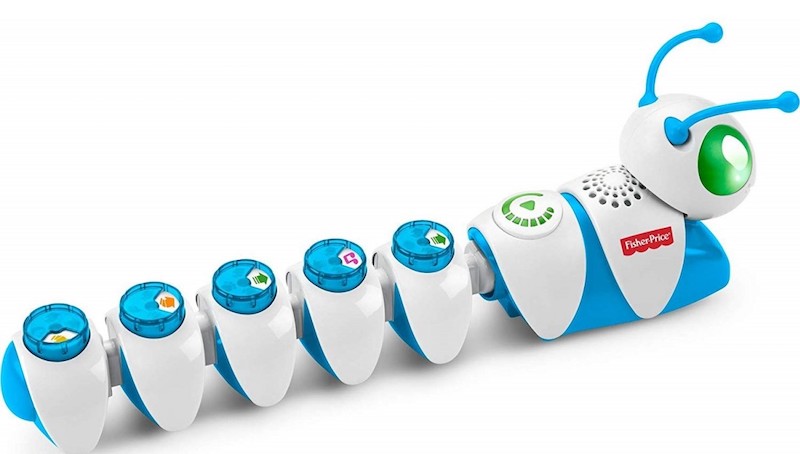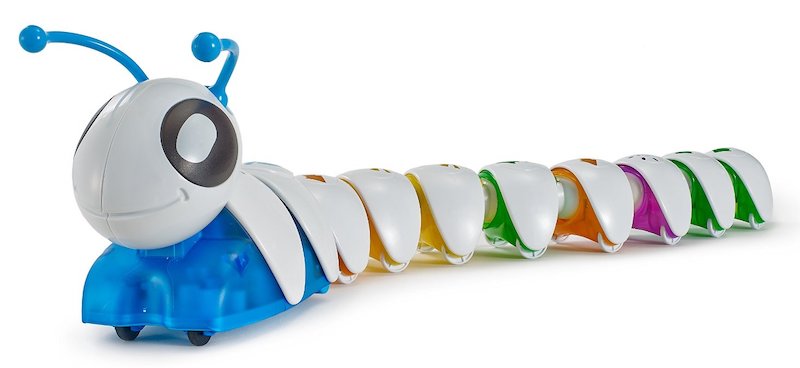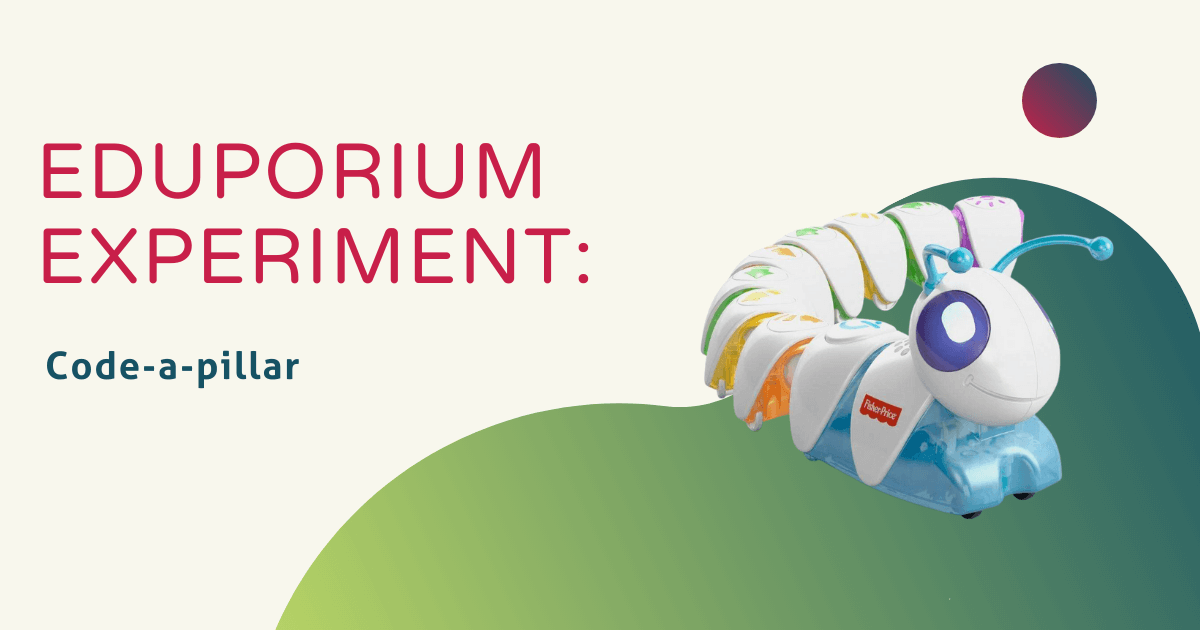Eduporium is home to some of the most advanced educational technologies, including affordable, high-end 3D printers, CNC machines, VR systems, computers, and more. While we fully endorse each of these products and their value in 21st century education, we tend to gravitate a bit more towards technology that enables the littlest learners to get a feel for what it's like to work with their hands and engage in authentic problem solving. Sometimes, we’re even comfortable recommending technology that’s suitable for children who haven’t even entered kindergarten yet. You guessed it—the Code-a-pillar is one of those technologies.
Code-a-pillar, as you can tell from its appearance, looks like nothing other than a fun toy for a child of three or four years old to play with at home. Having the word ‘code’ in the name, however, foreshadows its usefulness in introducing children to one of the most important 21st century skills. Code-a-pillar’s creators have made it their mission to allow the youngest of learners to begin developing vital skills by turning learning into something more like a game. This week, I put the Code-a-pillar to the test to see if this techy insect has what it takes to help kids build real-world skills.
One of the first things I realized about the Code-a-pillar (which was confirmed by the instructions) is that each of the segments of its body is a different color. I thought that might mean they represent different values or inputs and it turns out I was right. I’m starting to catch on to how this whole coding thing works, I guess. It turns out that each segment represents a different action and, depending on how they are constructed, kids can control the Code-a-pillar in different ways, illustrating to them the importance of certain input values leading to certain outputs just as is the case with actual coding. The patterns and order of the patterns they create essentially dictates the Code-a-pillar’s movements.

It didn’t take me too long to figure out that order matters with Code-a-pillar. The order and the direction that each segment is facing tells the robot to complete a unique action. I tried a simple maze-style course, which involved making the Code-a-pillar travel straight, turn left, and turn right at different points. Not that I was all that surprised since this tool is designed for extremely young children, but Code-a-pillar’s ease of use was incredible! It moved fluidly, executed the commands exactly as I expected, and involved no complications whatsoever.
The Code-a-pillar is a very useful technology tool for young children and will help them get used to activating key skills, like critical thinking, before they begin school. Plus, it, of course, introduces a very basic form of coding—something they will always need to know as much as they can about. We usually, of course, recommend all the EdTech tools we stock for use in the classroom (because why else would we sell them, right?), but, in the case of Code-a-pillar, since it’s designed for kids to use before they even enter kindergarten, this tool is not quite ideal for a classroom setting because it’s a little too basic for kids once they reach five or six years old.

With that being said, it’s perfect for the three- and four-year-olds to get comfortable with coding and problem solving before they start kindergarten! For them, it offers a very valuable learning experience and one they will be able to build on as they explore STEM more in-depth in their first couple of years of school! So, it's definitely a thumbs up for the Code-a-pillar—it just depends on the age of the children who will be using it!
To purchase Code-a-pillar or learn more about it, visit the Eduporium store! And, as always, look out for next week’s edition of the Eduporium Experiment coming at you a week from today!



